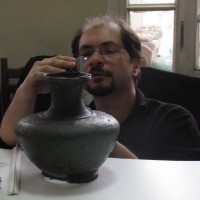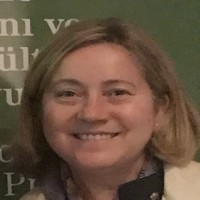In Memoriam
Research Article
News
Issue Reviewers




Aim & Scope
Aim
Anatolia Journal primarily aims to publish scientific and original studies on Anatolian Archeology. In line with this purpose, it aims to carry the recognition and visibility of Anatolian archeology to international scientific platforms and to share them on these platforms. Thus, it aims to contribute to and develop archaeological knowledge and the science of archeology not only within the borders of modern Turkey but also at the international level. In line with this purpose, it has been contributing to the development of archeology at home and abroad since 1956.
Scope
Geographically, it covers Anatolia and the surrounding cultural regions. However, it is limited to three sub-disciplines of archeology, namely "Prehistoric Archaeology", "Protohistory and Near Eastern Archeology" and "Classical Archeology". Anadolu / Anatolia Journal is published once a year. In addition to research articles, within the scope of these geographical and sub-disciplines, book reviews, excavation and research reports and news can also be included in the journal. The studies to be included in this latter group are not subject to peer-review, unlike the processes applied to research articles, and are under the responsibility of the editorial board.
Author Guidelines
Preparation of Manuscripts
Photographs, drawings and plans should be sent at least in 300 dpi resolution and preferably in TIFF format.
A cover letter providing the title of the article and the author’s name, affiliation, mailing address, telephone number and e-mail address should accompany all submissions. In case of articles with more than one author, the names of the authors should appear in the order of their degree of contribution to the work. In order to facilitate the peer-review process, manuscripts should otherwise be prepared with attention to maintaining the anonymity of the author(s). These conditions must be met in order for an article to be evaluated by the journal.
General Matters of Style
The text should be prepared in MS-Word in double columns, using font style “Garamond” both in body and footnote text with font sizes 12 and 9, respectively.All parts of the manuscript must be written 1.04 spaced on one side of an 19.5 x 27.5 cm sized paper. Margins on edges should be 3 cm at the left, 2 at the right, 3.7 at above and 3 at below.
Bibliographical References and Footnotes
For the citation of the periodicals, a single abbreviation system must be used on the basis of AA2. Halbband 2005, 329-389 (https://www.dainst.org/documents/10180/70593/02_Liste-Abk%C3%BCrzungen_quer.pdf/2c74093b-c8b6-4c6a-8af1-17a155109505); AJA(https://www.ajaonline.org/submissions/abbreviations) or Der Neue Pauly.The periodicals, which are not included in above-mentioned references, should be abbreviated as below:
Arkeoloji ve Sanat Dergisi = ASanat
Arkeometri Sonuçları Toplantısı = ArkST
Dil, Tarih ve Coğrafya Fakültesi Dergisi, Ankara Üniversitesi = DTCFD
Forschungen in Nysa am Mäander = FiN
Müze Kurtarma Kazıları Semineri = MüzeKK
Türk Tarih Kongresi Bildirileri= TürkTK
Ancient sources must be cited according to “LIMC”.
Footnotes
Footnotes should be numbered starting with “1” from the first page and should appear at the bottom of each page.Examples for a book or article:
Single author: Yalçınkaya 1998, 490.
Two authors: Yalçınkaya – Kartal 1998, 165.
More than two authors: Yalçınkayaet al.1998, 235.
Bibliography
A full bibliography with a list of all works cited must be appended to the end of the article, arranged in alphabetical order by last name of author.Example for citing an article in a periodical:
Yalçınkaya 1998 I. Yalçınkaya, “La Grotte d’Öküzini: Généralités dans le contexte anatolien”, ERAUL 85.2, 1998, 489-499.
Cahill – Kroll 2005 N. D. Cahill – J. H. Kroll, “New Archaic Coin Finds at Sardis”, AJA109.4, 2005, 589-617.
Hassall et al. 1974 M. Hassall – M. Crawford – J. Reynolds, “Rome and the Eastern Provinces at the End of the Second Century B.C.”, JRS64, 1974, 195-220.
Example for citing a book:
Yalçınkaya 1989 I. Yalçınkaya, Alt ve Orta Paleolitik Yontmataş Endüstrileri Biçimsel Tipolojisi ve Karain Mağarası(Ankara 1989).
Carradice – Price 1988 I. Carradice – M.J. Price, Coinage in the Greek World(London 1988).
Kadıoğlu et al. M. Kadıoğlu – K. Görkay – S. Mitchell, Roma Dönemi’nde Ankyra(İstanbul 2010).
For the second or revised edition of the book, see example below:
Akurgal 1989 E. Akurgal, Anadolu Uygarlıkları2 (Istanbu1 989).
Example for citing an article in a proceedings book or Festschrift:
Kadıoğlu 2013 M. Kadıoğlu, “Anazarbos Zafer Takı: Restitüsyon ve Tarihleme Önerisi”, in: G. Kökdemir (Ed.), Orhan Bingöl’e 67. Yaş Armağanı/A Festschrift for Orhan Bingöl on occasion of his 67th Birthday (Ankara 2013) 237-260.
Taşkıran – Taşkıran 2011 H. Taşkıran – Z. Fürüzen Taşkıran, “İki Yüzeyli Aletlerin Anadolu’daki Dağılımında Yeni Bir Nokta: Afyonkarahisar”, in: H. Taşkıran – M. Kartal – K. Özçelik – M. B. Kösem – G. Kartal (Eds.), Işın Yalçınkaya’ya Armağan Kitabı(Ankara 2011) 235-244.
Kadıoğlu et al. 2015 M. Kadıoğlu – C. Özbil – M. Kerschner – H. Mommsen, “Teos im Licht der neuen Forschungen/Yeni Araştırmalar Işığında Teos”, in: Ü. Yalçın – H.-D. Bienert (Eds.), Anatolien – Brücke der Kulturen. Aktuelle Forschungen und Perspektiven in den deutsch-türkischen Altertumswissenschaften/ Kültürlerin Köprüsü Anadolu. Türk-Alman Eskiçağ Bilimlerinde Güncel Bilimsel Araştırmalar ve Yeni Bakış Açıları. Der Anschnitt. Zeitschrift für Kunst und Kultur im Bergbau. Beiheft 27 (Bonn 2015) 345-366.
Electronic sources
By citing electronic sources (Web site etc.) the full address and/or the publication details of the source should be given along with the date of access.Example:
Horejs 2008 B. Horejs, “Çukuriçi Höyük. A New Excavation Project in the Eastern Agean”.
http://www.aegeobalkanprehistory.net/article.php?id_art=9 (14 Sep. 2008).
Kartal 2015 G. Kartal, “Karain B Gözü Kalkolitik Çağ Yontmataş Buluntu Topluluğunun Tekno-Tipolojik Analizi”, Anadolu/Anatolia 21, 2015, 25-49. doi: 10.1501/Andl_0000000420
Ethical Principles and Publication Policy
Publishing ethics:
These principles apply to our editors, reviewers, writers, publisher and readers.
This journal abides by the principles of COPE (Committee on Publication Ethics) and will follow their guidance in relation to any ethical issues arising.
For reviewers:
This journal operates a system of blind peer review, without prejudice and to the best ethical standards, taking note of COPE’s guidance to peer reviewers laid out in *COPE’s Ethical Guidelines for Peer Reviewers*. Reviewers are expected to complete reviews within th allotted timeframe. We respect the confidentiality of our reviewers and we expect authors and reviewers to do likewise. Reviewers are expected to report without prejudice and with the use of respectful language. Reviews containing aggressive language or personal views about authors will be disregarded.
A reviewer should notify the editors about any possible conflict of interest before committing to reviewing a submission.
For authors:
All submissions must be original research. The journal does not accept articles that have already been published wholly, or in part, elsewhere. At time of submission an article must not be under consideration or review by any other journal. The journal reserves the right to check texts using plagiarism detection software (iThenticate or similar). Relevant permissions must be obtained for the reproduction of pictures or figures according to the copyright terms of their source, authors are required to confirm that permissions have been obtained. These permissions are the responsibility of the author and must be provided to the journal before publication. The journal reserves the right to withdraw an article from publication, including post-publication retraction, if ethical or copyright issues are found. In such a situation, an evaluation will be carried out according to COPE’s guidelines. Authors will be informed of any such decision.
Our blind peer review process and editorial code of ethics are designed to ensure that the journal avoids prejudice based on nationality, gender or any other characteristic.
Authorship:
Those named as authors must have made a substantial contribution to the preparation of the submission in the form of conception and design, data gathering and interpretation, data analysis or research and writing. All co-authors must have approved the final submitted version, and all are equally accountable for the contents of the work.
The corresponding author is responsible for communicating with the journal editors on behalf of all article authors, carrying our corrections and proofreading, re-submitting article within specified time frames. The corresponding author must confirm on behalf of all co-authors that the manuscript abides by the journal’s ethical and copyright guidelines. The corresponding author must also respond to any post-publication enquiries, relating to permissions for reproduction, data, ethical issues etc.
Authorship cannot be changed after initial article submission without the submission of a written request stating the reason for the requested change. Where there is more than one author, contributions of the authors must be made clear at the end of the text.
Copyright:
Anadolu is covered by a Creative Commons Attribution-NonCommercial 4.0 International (CC BY-NC 4.0). (https://creativecommons.org/licenses/by-nc/4.0/) which applies to all articles published in the journal.
Each article is allotted a DOI (Digital Object Identifier) number.
The copyright of articles published by Anadolu remains with the authors within the scope of the CC BY-NC 4.0 license. All copyright issued are the responsibility of the author/s. by agreeing to publish in the journal authors consent to abide by the terms of this copyright.
Plagiarism:
This is the use of the work of others (ideas, data, words, images etc. in all forms of media) without acknowledgement or, when relevant, obtaining the necessary permission. This includes self-plagiarism in which the author/s reproduce their own work without the necessary references or permissions. Submissions containing plagiarised material will be automatically rejected. After publication, issues can be raised with the editors who will decide on relevant action.
Funding:
Funding received for the completion of the work presented in publication must declared, including grant numbers where appropriate.
Price Policy
Charges:
Anadolu / Anatolia is an open access journal under the Creative Commons Attribution-NonCommercial 4.0 International (CC BY-NC 4.0). (https://creativecommons.org/licenses/by-nc/4.0/).
The journal is an international peer reviewed journal published once a year in December.
Each author receives one printed copy of the journal in which their article appears free of charge.
THERE IS NO CHARGE TO PUBLISH IN THE JOURNAL and all published material is available for download in pdf format from https://dergipark.org.tr/en/pub/anatolia The journal does not accept sponsorship or include any form of advertising.
Since 1956 Anadolu / Anatolia has been a not-for-profit journal. Printed copies are produced for the purpose of library exchanges with other international journals. Price of printed copies is determined each year by the Faculty Committee and international sales are currently priced at $50 + $10 postage.
Anatolia Dergisi Başvuru Tarihleri:
Makalelerin teslimi 01 Ocak ile 15 Eylül tarihleri arasındadır.
Dergipark sisteminde problem yaşanması halinde lütfen makalelerinizi anatolia@ankara.edu.tr mail adresine bu tarih aralığında gönderiniz; posta veya kargo kabul edilmeyecektir. Başvurular 15 Eylül'e kadar yapılmalıdır.
Anadolu Anatolia Dergisi, Creative Commons Attribution-NonCommercial 4.0 International (CC BY-NC 4.0) ile lisanslanmıştır.


